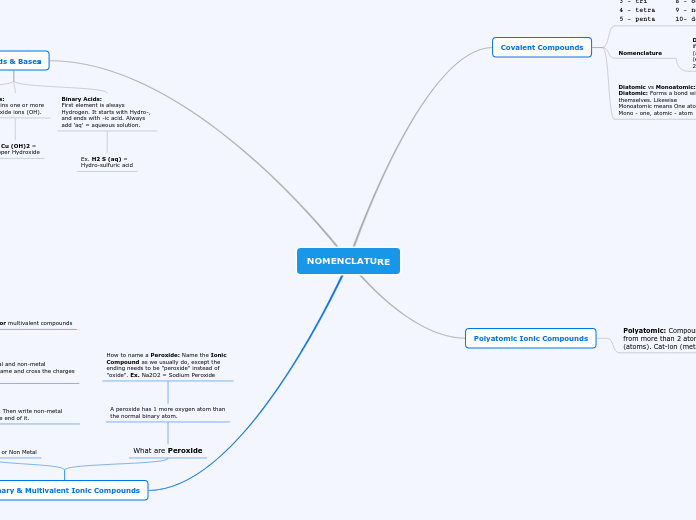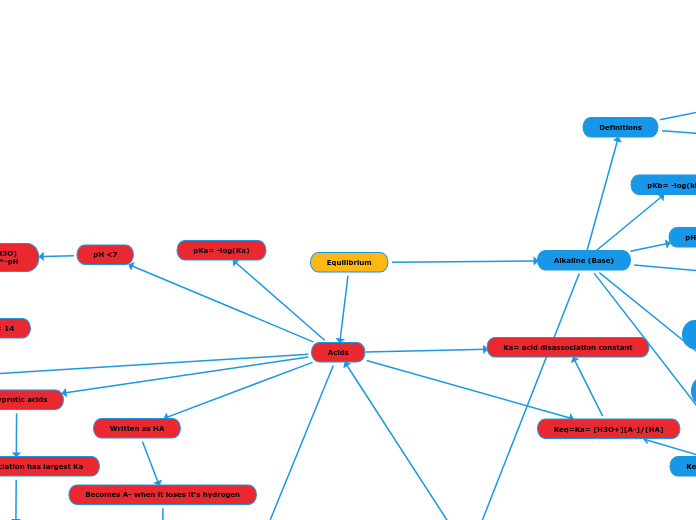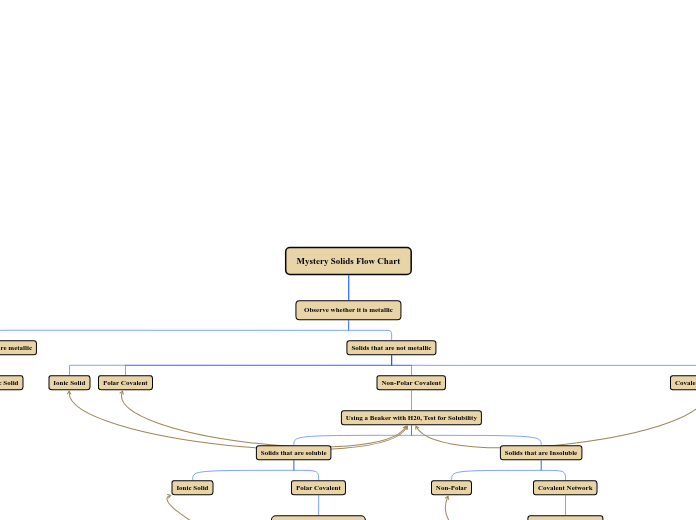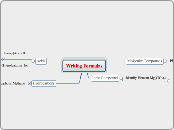NOMENCLATURE
Binary & Multivalent Ionic Compounds
What are Peroxide
A peroxide has 1 more oxygen atom than
the normal binary atom.
How to name a Peroxide: Name the Ionic Compound as we usually do, except the ending needs to be "peroxide" instead of "oxide". Ex. Na2O2 = Sodium Peroxide
Identify if it is a Metal or Non Metal
Name Metal my its elemental name. Then write non-metal elemental name and add "ide" at the end of it.
TO FIND FORMULA:
1. Find valence charge of both metal and non-metal
2. Write the chemical (elemental) name and cross the charges
EX. Lithium Oxide: Li2 O
Roman Numerals
We use roman numerals for only for multivalent compounds
Acids & Bases
Binary Acids:
First element is always
Hydrogen. It starts with Hydro-,
and ends with -ic acid. Always
add 'aq' = aqueous solution.
Ex. H2 S (aq) =
Hydro-sulfuric acid
Bases:
Contains one or more
hydroxide ions (OH).
Ex. Cu (OH)2 =
Copper Hydroxide
Oxy-Acids:
Contains 3 elements, 1st being
Hydrogen and Last being Oxygen.
Ex. HBrO3 =
Bromic Acid. Similarly
HBrO2 = Bromous acid
Polyatomic Ionic Compounds
Polyatomic: Compounds that contain ions made from more than 2 atoms. Poly (many) atomic (atoms). Cat-ion (metals) and Anions (polyatomic)
Example:
K2 SO4 = Potassium Sulphate
Naming:
- Name the metal
- Name the Polyatomic ion
(do not change ending ^^)
- If the metal is multivalent,
indicate its value as a Roman
numeral in brackets.
Oxyanion is a polyatomic ion which
contains oxygen.
Covalent Compounds
Diatomic vs Monoatomic:
Diatomic: Forms a bond with themselves. Likewise Monoatomic means One atom; Mono - one, atomic - atom
Example: H2 (g) --> Hydrogen Gas
Diatomic: I Brought Cl For Our New Hottub
Nomenclature
Determine the # of atoms in the first element,
if it is greater than one than use the correct Greek prefix (above). If it's just one, than just use the element name (don't add mono). Then, doing the same thing, look at the 2nd element and add "ide" at the end and use mono.
1 - mono 6 - hexa
2 - di 7 - hepta
3 - tri 8 - octa
4 - tetra 9 - nona
5 - penta 10- deca









